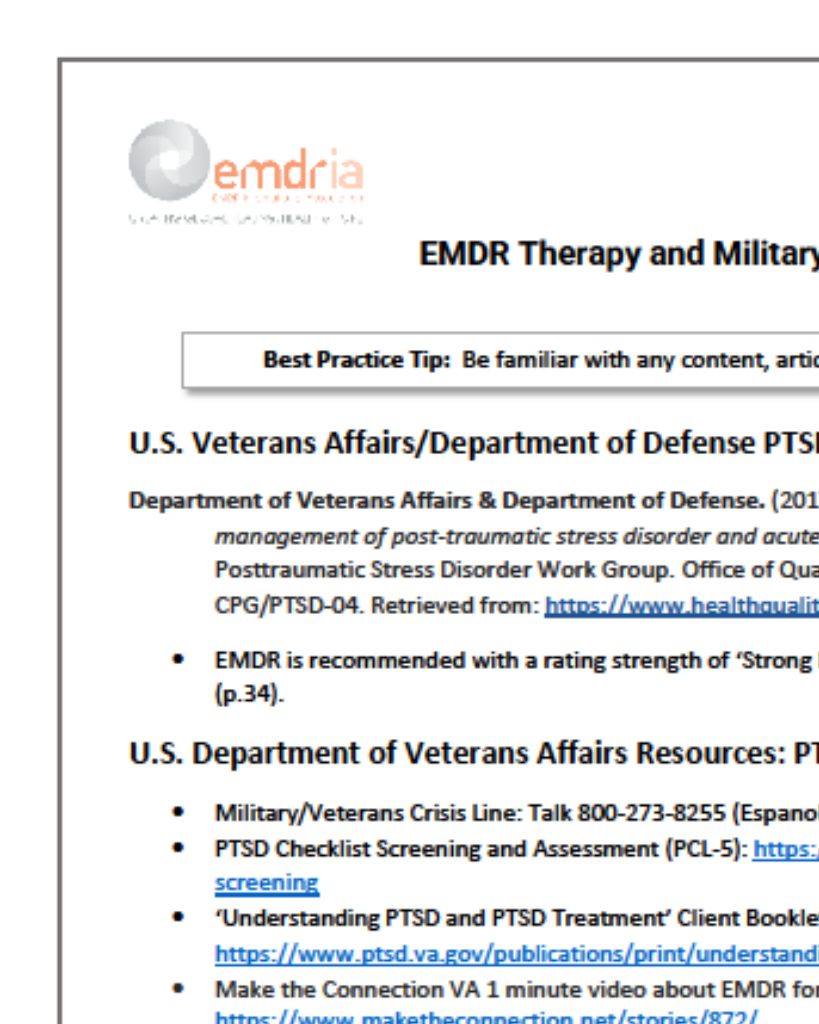Effects of rhythmic eye movements during a virtual reality exposure paradigm for spider-phobic patients
Efficacy of a virtual reality exposure therapy (VRET) paradigm for phobic patients could be improved by adding rhythmic eye movements.
Article Abstract
Rhythmic eye movements performed during eye movement desensitization and reprocessing (EMDR) therapy have been shown to evoke a physiological de-arousal pattern.
Objectives: Here, we examined whether the efficacy of a virtual reality exposure therapy (VRET) paradigm for phobic patients could be improved by adding rhythmic eye movements.
Design: Spider-phobic patients (N = 53) were randomly assigned to either a group performing rhythmic eye movements or a control group undergoing exposure without such eye movements.
Methods: During the VRET session, heart rate, electrodermal activity, eye movements, and subjective fear ratings were recorded. Participants underwent behavioural avoidance tests before and after treatment as well as a follow-up 10–14 days later. Questionnaire data were assessed before exposure and at follow-up.
Results: There were clear treatment effects in both groups with almost no group differences (i.e., the subjective fear ratings and the skin conductance response).
Conclusions: Contrary to our expectation, the implementation of rhythmic eye movements during virtual exposure did not enhance the effectiveness of the treatment. However, the eye movement group did show a significantly lower heart rate during exposure compared with the control group which might indicate a less stressful treatment.
Practitioner points:
- One-session Virtual Reality Exposure Therapy reduced fear of spiders effectively.
- Performing rhythmic eye movements during exposure did not enhance therapy effects.
- Rhythmic eye movements during exposure resulted in lower heart rate than standard exposure.
—Description from publisher
Article Access
Open Access
Reitmaier, J., Schiller, A., Muhlberger, A., Pfaller, M., Meyer, M., & Shiban, Y. (2021). Effects of rhythmic eye movements during a virtual reality exposure paradigm for spider-phobic patients. Psychology and Psychotherapy: Theory, Research and Practice. Open access: https://doi.org/10.1111/papt.12363
Date
September 6, 2021
Creator(s)
Jessica Reitmaier, Anika Schiller, Andreas Mühlberger
Contributor(s)
Michael Pfaller, Marie Meyer, Youssef Shiban
Topics
Anxiety/Panic/Phobias
Practice & Methods
Virtual Reality/Technology
Extent
22 pages
Publisher
Wiley
Rights
© 2021 The Authors. Psychology and Psychotherapy: Theory, Research and Practice published by John Wiley & Sons Ltd on behalf of British Psychological Society
This is an open access article under the terms of the Creative Commons Attribution-NonCommercial-NoDerivs License, which permits use and distribution in any medium, provided the original work is properly cited, the use is non-commercial and no modifications or adaptations are made.
APA Citation
Reitmaier, J., Schiller, A., Muhlberger, A., Pfaller, M., Meyer, M., & Shiban, Y. (2021). Effects of rhythmic eye movements during a virtual reality exposure paradigm for spider-phobic patients. Psychology and Psychotherapy: Theory, Research and Practice. Open access: https://doi.org/10.1111/papt.12363
Audience
EMDR Therapists, Other Mental Health Professionals
Language
English
Content Type
Article, Peer-Reviewed
Access Type
External Resource, Open Access





